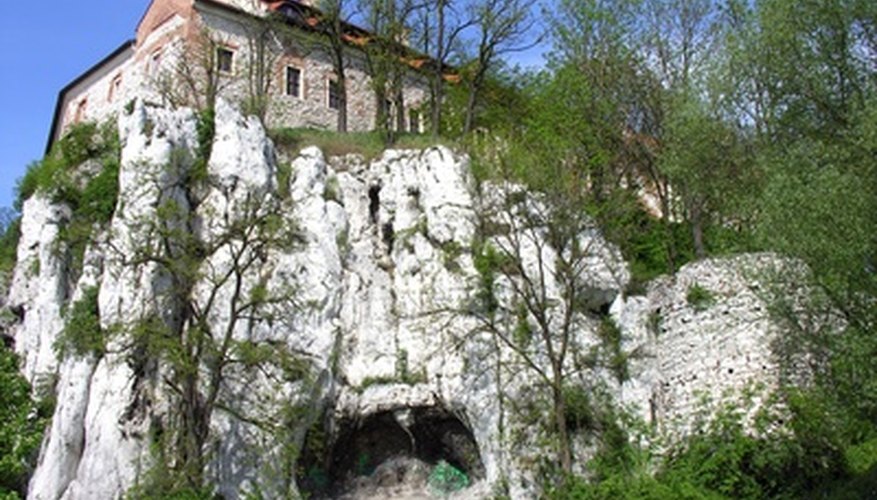Limestone is a sedimentary rock created from layers of calcium carbonate. Most of the world's limestone formed in the middle of once-flooded continents or along continental shelves where reefs were built. As a result it is often studded with the fossil remains of reef-forming animals. Its high fossil content and creamy white colour have made it a prized building material for thousands of years. The Egyptian and Aztec pyramids were made of limestone. With the proper tools, limestone can be easy to work with.
- Limestone is a sedimentary rock created from layers of calcium carbonate.
- With the proper tools, limestone can be easy to work with.
Find the grain. Limestone is a sedimentary rock so it is built in layers. To split it without breaking it, be sure to split along the layers and not parallel to them. You'll see the lines that were left as each layer settled on top of the one before it.
Break the surface. Place your chipping chisel on one end of the limestone slab and pound it with your rock hammer. The idea is to create two or three divots in the stone where you will place the wedging and prying chisels.
Place the wedging chisels. Once your divots are deep enough, hold the wedging chisels in them and strike them soundly with the hammer. It might take a few whacks to get the first split, but don't give up.
- Place your chipping chisel on one end of the limestone slab and pound it with your rock hammer.
- Once your divots are deep enough, hold the wedging chisels in them and strike them soundly with the hammer.
Move down the stone. As the rock begins to split you can move the two or three wedging chisels further along the length of the stone, splitting it as you move and hammer.
WARNING
Be sure to wear eye protection when you are working with any stone. Small chips or even dust particles can seriously damage your eyes.
